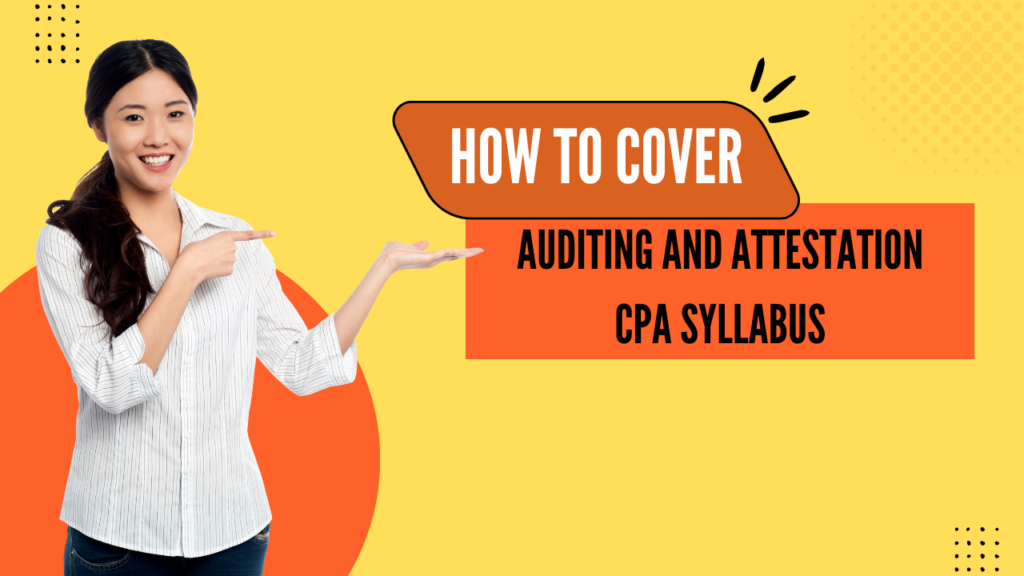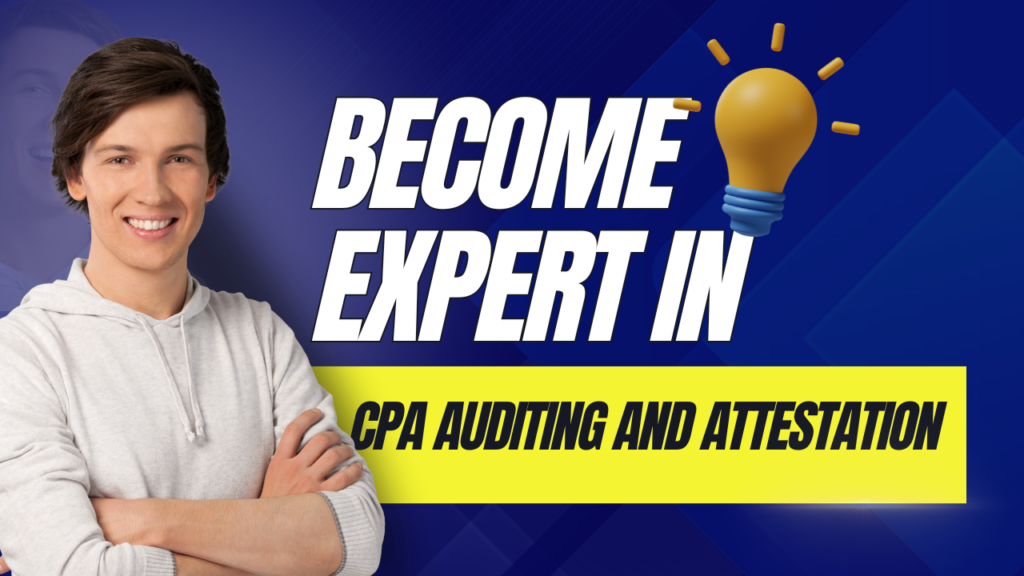Key Takeaways:
- Mastery of the Auditing and Attestation CPA Syllabus is essential for CPA success.
- Craft a one-month study schedule, prioritizing key topics like risk assessment and attestation engagements.
- Leverage resources such as Dumpsarena and integrate practice exams into your study routine.
- Enhance memorization with mnemonic devices and visual aids.
- Join study groups for support and refine your study strategy weekly for optimal preparation.
Question: What are the key strategies for mastering the Auditing and Attestation CPA Syllabus?
Answer: To excel in the Auditing and Attestation CPA Syllabus, candidates should craft a one-month study schedule, prioritize key topics such as risk assessment and attestation engagements, leverage resources like Dumpsarena, integrate practice exams into their routine, enhance memorization with mnemonic devices and visual aids, join study groups for support, and refine their study strategy weekly for optimal preparation.
Understand the Structure Of The Auditing and Attestation CPA Syllabus
The Auditing and Attestation CPA Syllabus is an indispensable guide for those aspiring to excel in the field of auditing and attestation. This comprehensive syllabus is meticulously designed to cover all the essential aspects and principles of auditing, ensuring that candidates are well-prepared for the CPA examination. The structure of the syllabus is thoughtfully laid out to facilitate a deep understanding of the subject matter, encompassing topics such as the auditing process, standards, risk assessment, internal controls, and the evaluation of audit evidence.
Furthermore, the syllabus delves into the nuances of attestation engagements, including the preparation, reporting, and performance standards. Each section is carefully sequenced to build upon the foundational knowledge, gradually leading to more complex concepts and practices. This ensures a holistic learning experience, enabling candidates to develop a robust understanding of auditing and attestation principles. Preparatory materials, such as those offered by Dumpsarena, can be invaluable in reinforcing the knowledge acquired through the syllabus, providing candidates with the confidence and competence to excel in the CPA examination.
In essence, the Auditing and Attestation CPA Syllabus serves as a roadmap for success in the auditing domain, equipping candidates with the necessary skills and knowledge to navigate the complexities of the field. By adhering to the structure and content of the syllabus, candidates can ensure a comprehensive and effective preparation for their CPA journey.
Create A Realistic Study Schedule For One Month
Auditing and Attestation CPA Syllabus Creating a realistic study schedule for one month requires a strategic approach, particularly for those preparing for rigorous examinations such as those encompassed by the Auditing and Attestation CPA Syllabus. The key to success lies in balancing thoroughness with manageability, ensuring that each day's study session is both productive and sustainable. Initially, it's crucial to assess the syllabus's breadth and depth, identifying areas of strength and those requiring additional focus. This assessment will guide the allocation of study hours, with more time dedicated to complex topics.
Auditing and Attestation CPA Syllabus Week one should start with an overview of the syllabus, dedicating each day to a different fundamental aspect of auditing and attestation. This sets a solid foundation, upon which more detailed study can be built. Subsequent weeks can delve deeper into specific areas, using a variety of resources to enhance understanding. Incorporating practice questions and mock exams, such as those available from Dumpsarena, is essential in the latter half of the month. This not only aids in applying theoretical knowledge but also in identifying any lingering areas of uncertainty.

Finally, it's imperative to include regular, shorter review sessions for previously covered material, ensuring retention and comprehension. Rest days and shorter study sessions should also be scheduled to prevent burnout. By following a structured, realistic study schedule, candidates can optimize their preparation time, approaching their examinations with confidence and clarity.
Identify Key Topics and Allocate More Time to Them
Auditing and Attestation CPA Syllabus Identifying key topics within the Auditing and Attestation CPA Syllabus and allocating more time to them is a strategic approach that can significantly enhance one's study efficiency and examination readiness. This method involves meticulous analysis of the syllabus, pinpointing areas that are not only challenging but also carry a substantial weight in the examination. Given the comprehensive nature of the syllabus, this task requires diligence and a deep understanding of the subject matter.
Once the critical topics have been identified, the next step is to devise a study plan that allocates additional time and resources to these areas. This might involve setting aside specific days of the week to focus solely on one topic and using a variety of learning materials to gain a multifaceted understanding. Resources from Dumpsarena can be particularly useful in this phase, offering practice questions and mock exams that cover these key areas in depth. This targeted approach ensures that candidates can delve deeper into complex subjects, enhancing their grasp and retention of the material.
Auditing and Attestation CPA Syllabus Moreover, this strategy allows for a more balanced study schedule, where candidates can spend less time on topics they are comfortable with, thereby maximizing their overall study effectiveness. Through careful planning and focused study, candidates can navigate the complexities of the syllabus with greater confidence and achieve a higher level of preparedness for their CPA examination.
Use CPA Review Courses and Study Materials Effectively
Utilizing CPA review courses and study materials effectively is paramount for candidates preparing for the CPA examination, particularly those focusing on the Auditing and Attestation of the CPA Syllabus. The vast array of resources available, including those from Dumpsarena, provides candidates with comprehensive tools designed to enhance their understanding and mastery of the subject. However, the sheer volume of materials can be overwhelming, making it crucial for candidates to adopt a strategic approach to their studies.
The first step towards effective utilization involves selecting resources that align with one's learning style and the syllabus requirements. This might mean choosing video lectures for visual learners or practice questions for those who learn best through application. Once the appropriate materials have been selected, candidates should integrate them into a structured study plan, allocating specific times for different types of learning activities. For example, dedicating certain days to video lectures and others to practice tests can ensure a well-rounded preparation.
Moreover, it is essential to regularly review and assess one’s understanding of the material. This iterative process enables candidates to identify areas of weakness and focus their efforts more effectively. By using CPA review courses and study materials in a targeted and disciplined manner, candidates can significantly improve their readiness for the CPA examination, turning their aspirations into achievements.
Incorporate Practice Exams and Questions Into Your Study Routine
Auditing and Attestation CPA Syllabus Incorporating practice exams and questions into your study routine is a critical strategy for mastering the Auditing and Attestation CPA Syllabus. This approach not only familiarises candidates with the format and style of the CPA examination but also helps in identifying areas that require further study and understanding. Practice exams, such as those offered by Dumpsarena, provide an invaluable resource for this purpose, enabling candidates to simulate the exam experience under timed conditions.
Auditing and Attestation CPA Syllabus Allocating regular intervals within the study schedule for these practice sessions allows for the consistent application of theoretical knowledge to practical scenarios, enhancing retention and comprehension. It is advisable to begin integrating practice questions early in the study process, gradually increasing the frequency and complexity as the examination date approaches. This method ensures a gradual build-up of confidence and exam readiness.
Furthermore, reviewing the answers and explanations for these practice questions offers insights into the examiners' expectations and the rationale behind certain answers. This reflective practice encourages a deeper understanding of the subject matter, allowing candidates to refine their approach to both familiar and challenging topics. By making practice exams and questions a cornerstone of their study routine, candidates can significantly bolster their preparation for the CPA examination.
AUD Exam Dumps - CPA Auditing and Attestation Exam Study Course: https://dumpsarena.co/aicpa-dumps/aud/
Leverage Mnemonic Devices and Visual Aids For Memorization
Leveraging mnemonic devices and visual aids for memorization can significantly enhance the study process, especially when tackling the extensive content of the Auditing and Attestation CPA Syllabus. Mnemonic devices, which are techniques a person can use to help them improve their ability to remember something, can be particularly effective for memorizing complex concepts and terminologies that are prevalent throughout the syllabus. These devices transform information into a format that the brain can retain better, such as acronyms, rhymes, or associations.
Similarly, visual aids like charts, graphs, and mind maps can break down intricate topics into more digestible and understandable segments. Visual learning strategies not only aid in the retention of information but also in the comprehension of how different concepts interlink within the broader context of auditing and attestation. By integrating these tools into their study routine, candidates can create a more interactive and engaging learning experience.
Resources from Dumpsarena, alongside personal mnemonic devices and customized visual aids, can provide a multifaceted approach to studying. This method not only aids in memorizing key points but also in applying them to various scenarios, which is a critical skill in the CPA examination. Through the strategic use of these memory-enhancement techniques, candidates can navigate the complexities of the syllabus more effectively, leading to a more confident and prepared stance for the examination.
Join Study Groups or Forums For Support and Tips
Joining study groups or forums is a valuable strategy for candidates preparing for the CPA examination, particularly those focusing on the Auditing and Attestation CPA Syllabus. These collaborative environments offer a platform for sharing insights, exchanging study tips, and clarifying doubts. The collective knowledge and experience of group members can provide diverse perspectives on complex topics, enhancing the learning experience. Additionally, study groups and forums foster a sense of community, offering motivational support and encouragement throughout the preparation journey.
Auditing and Attestation CPA Syllabus Engaging in discussions within these groups can also aid in solidifying one’s understanding of the syllabus material. Explaining concepts to others is a proven method for reinforcing one's knowledge and identifying any gaps in understanding. Furthermore, members often share resources, such as those from Dumpsarena, which can be incredibly beneficial. These resources, combined with the practical advice and strategies shared among group members, can significantly improve study efficiency and exam readiness.

Ultimately, the collaborative nature of study groups and forums can transform the daunting task of CPA exam preparation into a more manageable and even enjoyable process. By leveraging the collective wisdom and support of peers, candidates can navigate the challenges of the syllabus with greater confidence and achieve a higher level of preparedness for their examination.
Review and Refine Your Study Strategy Weekly
Reviewing and refining your study strategy every week is a critical component of effective preparation for the CPA examination, especially when focusing on the Auditing and Attestation CPA Syllabus. This dynamic approach allows candidates to assess their progress, identify areas of weakness, and adjust their study plan accordingly. By taking the time each week to evaluate what has been achieved against set goals, candidates can ensure that their study efforts are both efficient and productive.
Auditing and Attestation CPA Syllabus Adjustments might include reallocating more time to challenging topics, incorporating different study materials or resources, such as those from Dumpsarena, or changing the study method if the current approach is not yielding the desired results. This iterative process of evaluation and adjustment helps in maintaining a focused and targeted study strategy that evolves in line with the candidate’s developing understanding and mastery of the syllabus content.
Furthermore, this regular review encourages a proactive rather than reactive approach to study, allowing candidates to stay ahead of potential challenges and reducing the likelihood of last-minute cramming. By dedicating time each week to refine their study strategy, candidates can optimize their preparation efforts, ensuring a comprehensive understanding of the syllabus and enhancing their readiness for the CPA examination.
Comments (0)